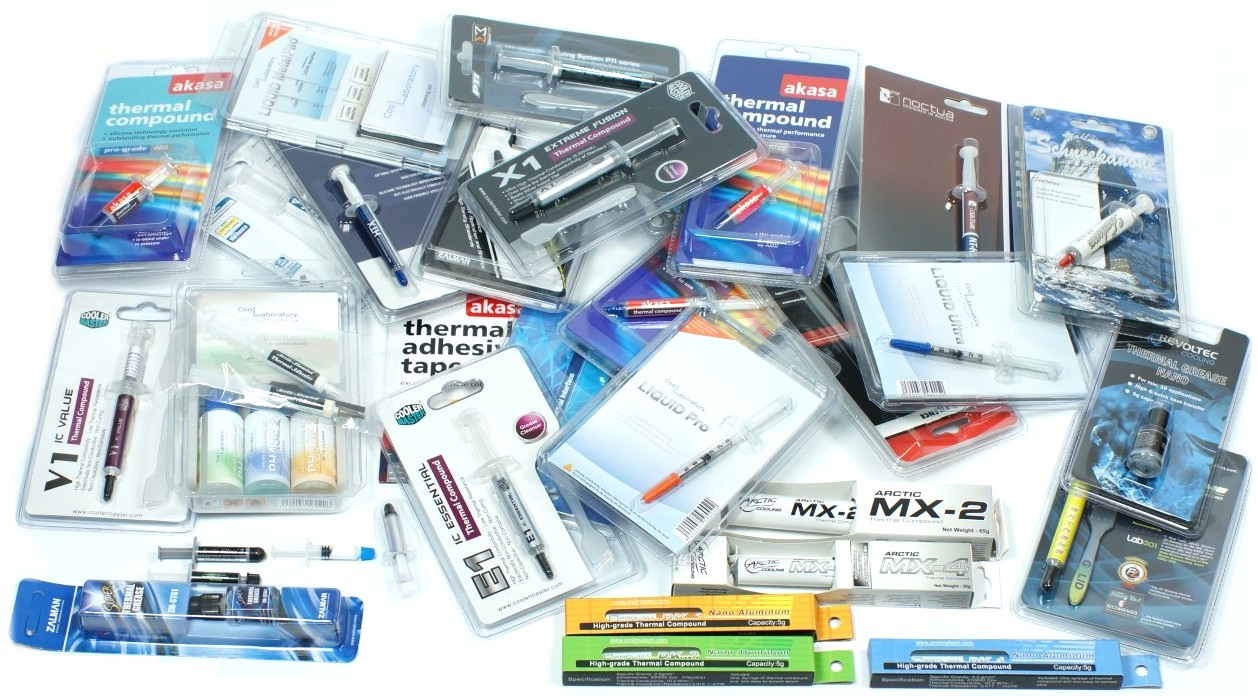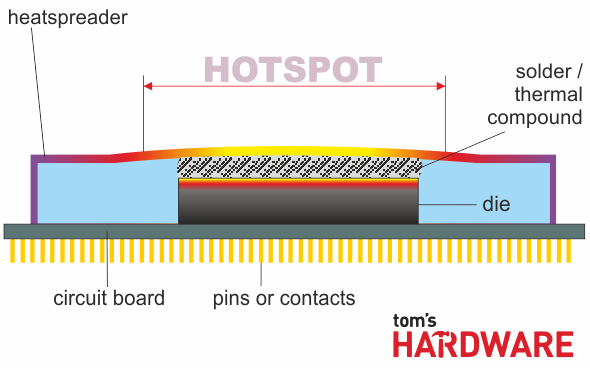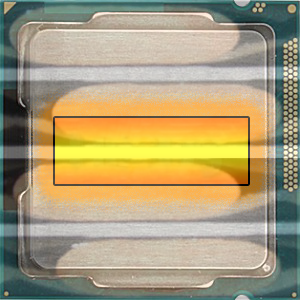Thermal Paste Comparison, Part One: Applying Grease And More
If you find yourself fighting a stubbornly-low overclock, there's a chance that your thermal solution isn't working as effectively as it should. We're testing a number of thermal pastes that might help. But first, let's go over the basics of CPU cooling.
Everything You Wanted To Know About Cooling A CPU
I’ve been working on this time-consuming thermal compound test for more than half a year, digging my way through the pastes supplied by Caseking (an online shop in Germany) and the ones we already had on-hand in the lab. Not only does a story like this take a lot of time (it involves nearly 40 products, after all), but it clearly requires a consistent test methodology to make sure the conclusions we draw are sound.
Because we have so many products, we're splitting the story into two parts. The first one delves into the theory and real-world use of thermal compounds, while the second presents all of our benchmark results and the corresponding test setups.
In part one, we'll cover the thermal properties of CPUs, surface types, background information about various thermal compounds and the methods for applying them, as well as two basic cooler types (liquid and air), along with the issues arising from different mounting pressures. A thermal paste working just fine with one cooler may be a bad fit for another. Therefore, we have to test our thermal pastes on AMD and Intel CPUs with a water cooler, a premium air cooler with high mounting pressure, as well as a more pedestrian push-pin setup, which stands in for the boxed heat sinks you get bundled with most processors.
In addition to CPUs, I also test each paste’s suitability for GPU cooling and assess its viscosity and its ease of use. But let’s start with the basics. What is this primordial goo all about?
The Heat Spreader
When you cut a CPU in half, you notice that the chip (die) itself is much smaller than the CPU package, and thus the die touches only part of the heat spreader. The spreader’s job is to distribute the CPU die’s heat across a larger area, which allows it to pass to the CPU cooler's heat sink.
The drawing illustrates two little-known facts. First, the CPU manufacturer fills the gap between die and heat spreader with a heat-conducting material. While AMD, just like Intel did in the past, fills the void with some kind of solder, Intel now merely uses a thermal compound, which has a higher thermal resistance, but probably saves a few pennies in production. This explains why cooling overclocked Intel CPUs has become more difficult since the Ivy Bridge architecture.
Heat Spreaders, Hot Spots, and Dire Consequences
The drawing also shows that, due to the size difference between CPU die and heat spreader, there are some areas on the heat spreader that will be cooler than the area directly above the die. The area above the die is called the hot spot because it is directly heated by the die underneath. The two images below illustrate what a hot spot is, albeit in an over-simplified way. Reality is not as simple; CPU cores may be loaded differently, and there is also the issue of on-die graphics, which may be more or less active than the processing cores. But let’s just look at the die as a whole and the heat spreader on top of it, viewed from above.
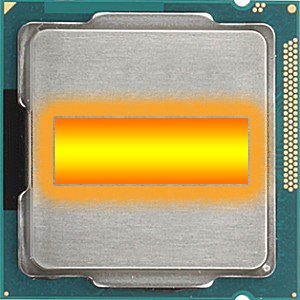
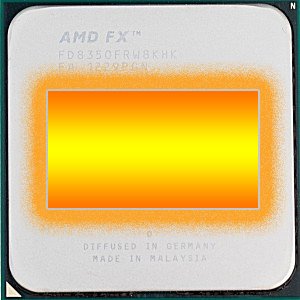
Due to its industry-leading 22 nm manufacturing technology, Intel CPUs have a smaller hot spot than AMD CPUs, and you should take this into account when choosing a heat sink. After all, you need to dissipate heat from the hot spot first and foremost.
Benefits and Drawbacks of DHT Coolers
CPU coolers with exposed, ground-flat heat pipes are the latest fad. They certainly save some money during production, which marketing departments then sell to customers as a performance-enhancing feature. But there are drawbacks to this mechanical design. Consider a cooler with, say, four heat pipes, like the Xigmatek Achilles in the picture below. The outermost heat pipes miss the hot spot completely. Even the two innermost heat pipes only partially cover the narrow hot spot of an Ivy Bridge-based CPU. Adding insult to injury, the cooler typically cannot be turned 90 degrees.
If we could turn the heat sink around we'd ameliorate this situation. AMD CPUs are typically not as affected due to their larger die area and CPU orientation; in most cases, all heat pipes cross the rectangular hot spot. If you want a DHT-based cooler, consider one with five heat pipes for more modern Intel CPUs, and try to avoid designs with large gaps between the ground-flat pipes.
Interim Assessment
Just by choosing an poorly-suited cooler, you can lose more thermal performance than the most expensive compound could ever gain back! But there is more bad news. Let’s take a look at what happens between the heat spreader and the heat sink.
Current page: Everything You Wanted To Know About Cooling A CPU
Next Page Interaction Of The Heat Spreader And Heat SinkGet Tom's Hardware's best news and in-depth reviews, straight to your inbox.

Igor Wallossek wrote a wide variety of hardware articles for Tom's Hardware, with a strong focus on technical analysis and in-depth reviews. His contributions have spanned a broad spectrum of PC components, including GPUs, CPUs, workstations, and PC builds. His insightful articles provide readers with detailed knowledge to make informed decisions in the ever-evolving tech landscape
